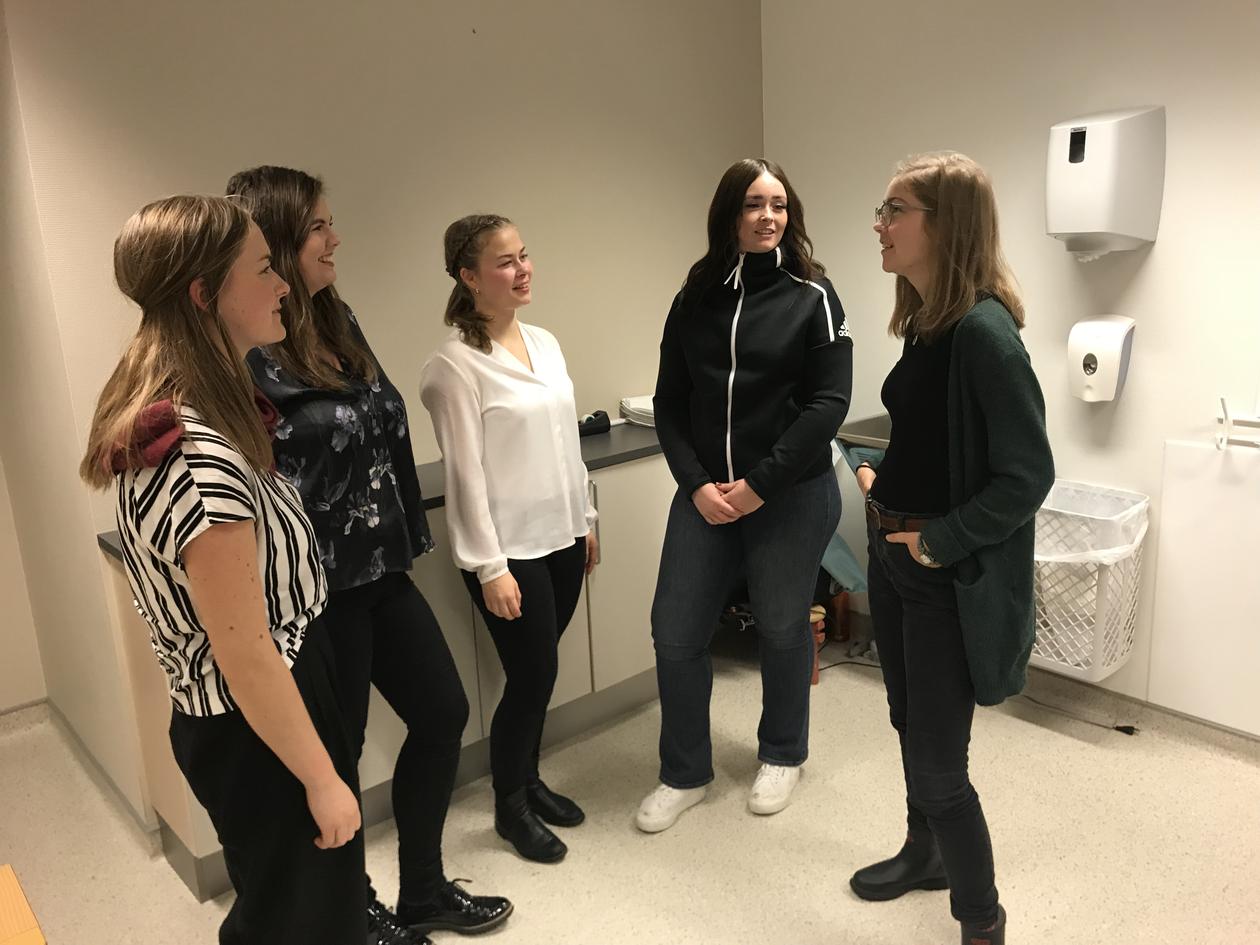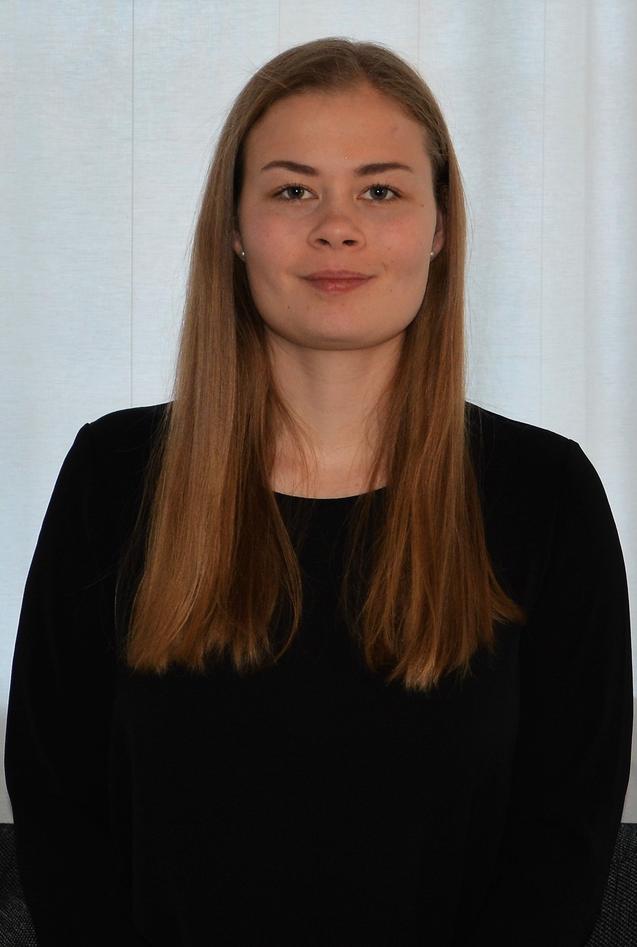Collaborating with professionals from different fields is educational
In TVEPS practice, students collaborate across professions in real work situations. - A very positive experience, says clinical nutrition student Mina Holtleite.
Main content
– As a clinical nutrition student, I found it educational and useful to collaborate with professionals from other health and social fields, such as occupational therapy, music therapy, psychology, and social work.
Mina Holtleite is in her final year of her master's degree and had TVEPS practice at the Wellness and Coping Center (FMS) in Straume in the municipality of Øygarden. The student group (picture to the right) met two users at the center. Afterward, they collaborate on proposals for measures to improve the users' daily lives.
LES OGSÅ: Samarbeider på tvers for å gjøre folk friskere
– I learned more about what other health and social professions emphasized during meetings with patients and what type of support and assistance they could provide. It was also useful to experience in which situations a focus on nutrition can be relevant. I now have a deeper understanding of the importance of interdisciplinary collaboration. '
– What could you contribute to this group with your profession?
– I asked about the patient's nutritional status and if they had any nutrition-related challenges. The patient´s we met in our TVΕPS practice had already found solutions to their nutrition-related challenges, so this was not an important part of our focus. I contributed to the general assessment of the participants and to the development of the action plans.
– How was the interdisciplinary collaboration?
– It seemed to me that both the staff at FMS and the participants viewed the interaction with our TVEPS group as a positive experience. We were very well received by the practice arena and received good feedback during the dialogue meeting. I think the TVΕPS practice has been very useful, as it has given me more knowledge about other health and social professions, experience with interdisciplinary collaboration, and experience of how an interdisciplinary conversation can help participants/users/patients. I was very satisfied with my TVΕPS group, and I believe that you will have a good collaboration within your team if you are open and curious about the other health and social professions.
Who are the TVΕPS students?
Students who participate in TVΕPS practice are in the final stages of their education and come from a variety of study programs at the University of Bergen and the Western Norway University of Applied Sciences. In TVΕPS, students from different professions are grouped together and sent to practice areas such as nursing homes, home care, kindergartens, or Nav. In the past year, students have also had the opportunity to try out the Learning and Coping Center in Bergen and the Well-being and Coping Center in Øygarden municipality.
In TVΕPS practice, students are given tasks that require them to collaborate, propose ideas, or solve challenges in real work situations and with real cases.
In a kindergarten setting, students might typically be tasked with developing structured activities for a group of children from a public health perspective. In a nursing home, student groups are given one day to conduct an interprofessional assessment of two patients through observation, conversation, and examination, and then create an action plan for how to improve their daily lives.
Both practice settings allow students to learn about interprofessional collaboration and experience the realities of the workplace. At the nursing home, staff members can benefit from input from the interdisciplinary student group, which may improve their work routines and benefit the patients.

